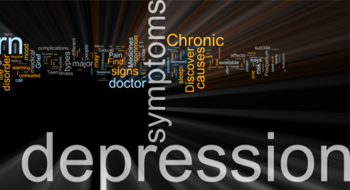
Twelve percent of current employees have a diagnosed mental issus and 17% delay taking action because they are afraid of the reaction they may get from family and friends.
These are the saddening numbers that Paula Allen, vice-president, research and integrative solutions with HR consultancy Morneau Shepell, cited from a Conference Board study and a 2010 Leger National Survey on Depression, at Benefits Canada’s 2012 Mental Health Summit.
Allen said the most prevalent workplace mental health conditions are depression, anxiety and substance abuse. “All are very manageable and need not result in long-term productivity loss, nor disability.”
Plenty of resources, little action
Fewer disability claims and a speedy return-to-work schedule for employees who are getting help with mental health issues—employers want these to be a reality. But while there’s no shortage of resources available to employers on how to create healthy workplaces, the problem lies in actually taking action. Workplaces have been saddled with a “do more with less” philosophy since 2008, and continuing economic challenges have left few able to buck that trend. Employees face increased workloads and they may also worry about impending layoffs, which can increase their stress levels and pave the way for mental health issues.
Since companies can do little to alleviate the global economic pressures that compel them to lay off or pile the work on, the best way to manage mental illness is through early detection. Unfortunately, few plan sponsors have the luxury of on-site medical staff.
Sean Slater is vice-president, business development, with Solareh, a consultancy that specializes in helping companies create healthy workplaces. He described warning signs for mental health conditions—signs that don’t require a medical degree to spot.
Managers need to watch for the following traits among workers:
- disorganized thinking;
- difficulty expressing themselves;
- decreased attention and/or concentration;
- lack of personal hygiene;
- aggression toward themselves or others;
- strained interpersonal relationships;
- repeated short-term absences;
- frequent tardiness, frequent breaks;
- requests for days off for unusual reasons;
- decreased interest in work;
- inferior quality of work or decreased quantity of work compared to usual performance; or
- discussions about a new situation or multiple life changes in a short period of time.
Slater added that any significant change in the person’s verbal and/or non-verbal behaviour, attitude or performance warrants attention, as does any change involving persistent, specific and uncharacteristic signs that last more than two weeks.
“Managers don’t need to solve the problems; they just need to be a facilitator toward help,” he said. “People don’t get sick overnight. There’s a process that predisposes us to it.”
As a first step, employers should offer training and education for managers and employees on how to recognize signs of mental distress. Managers should also be able to point employees to appropriate resources.
